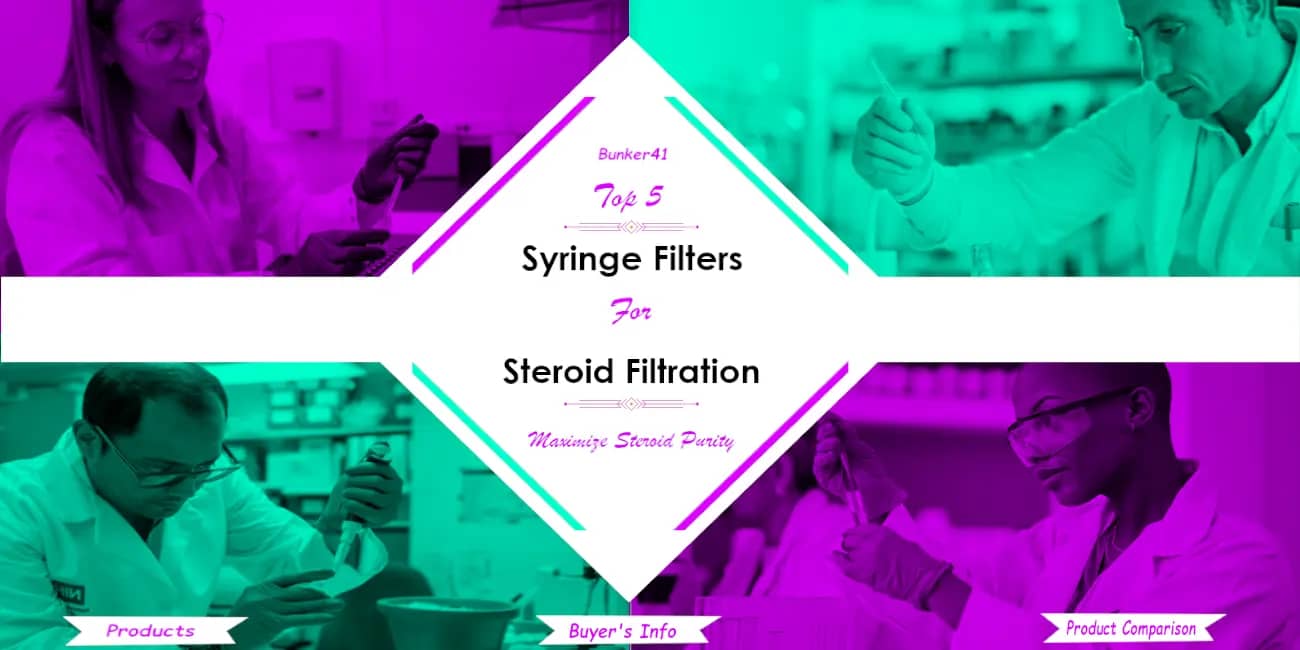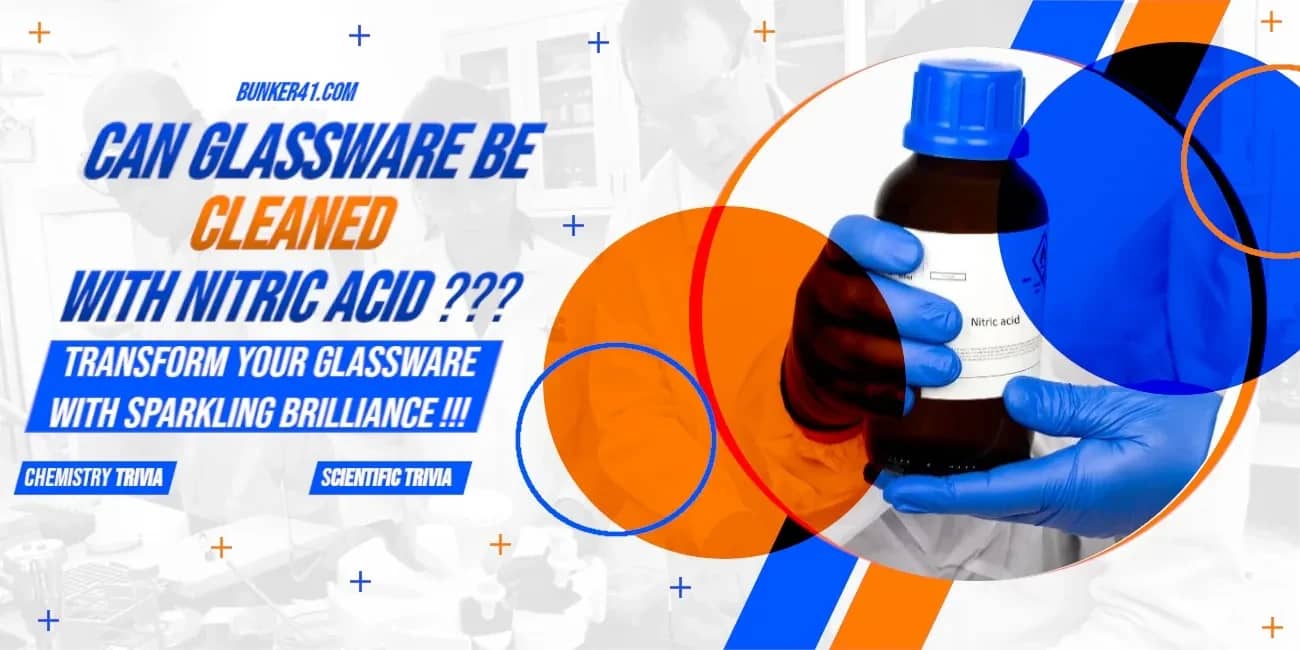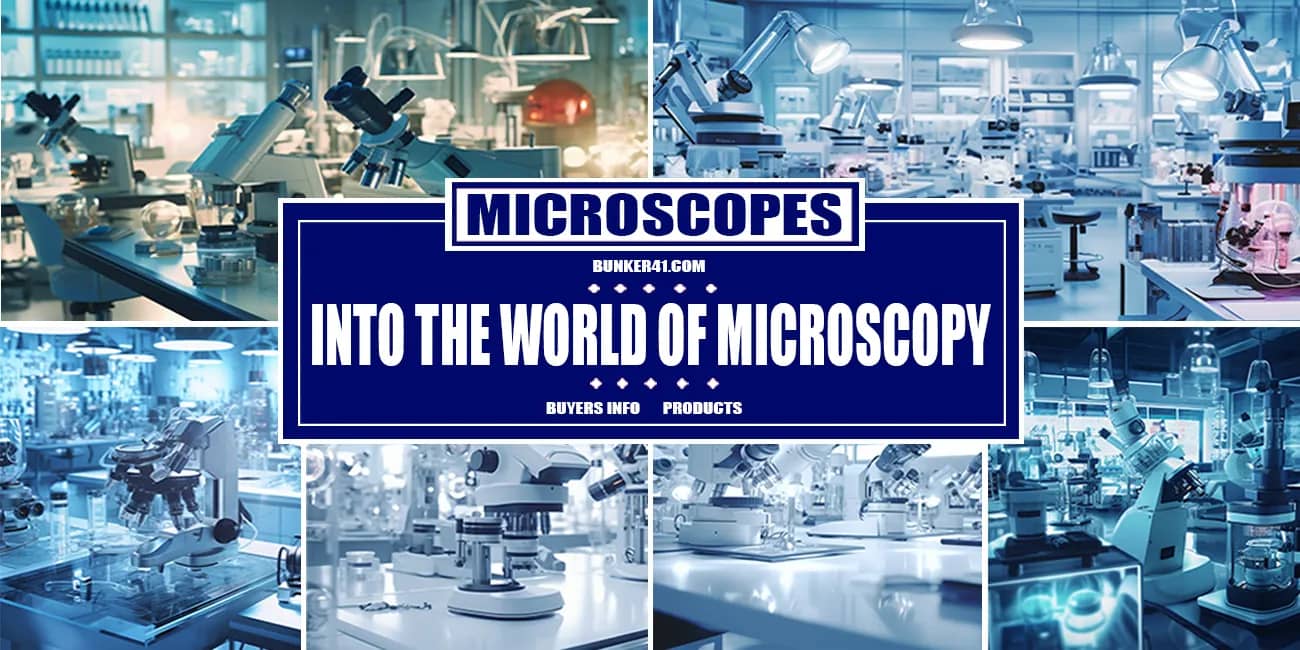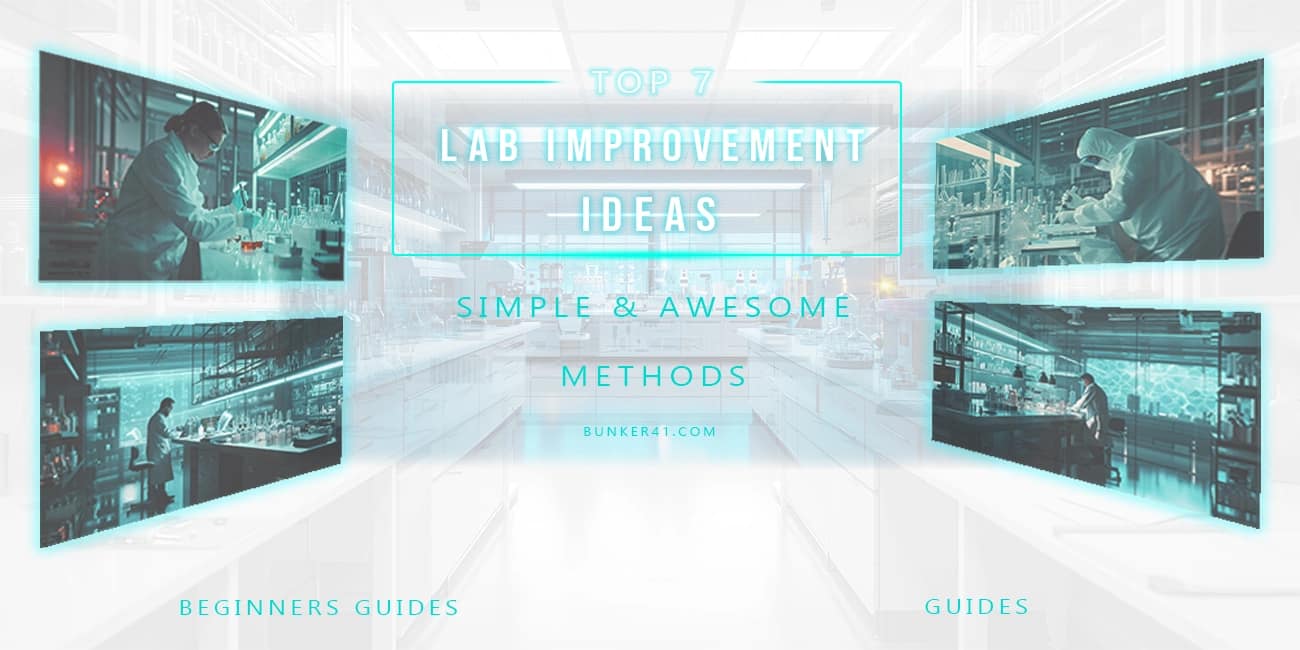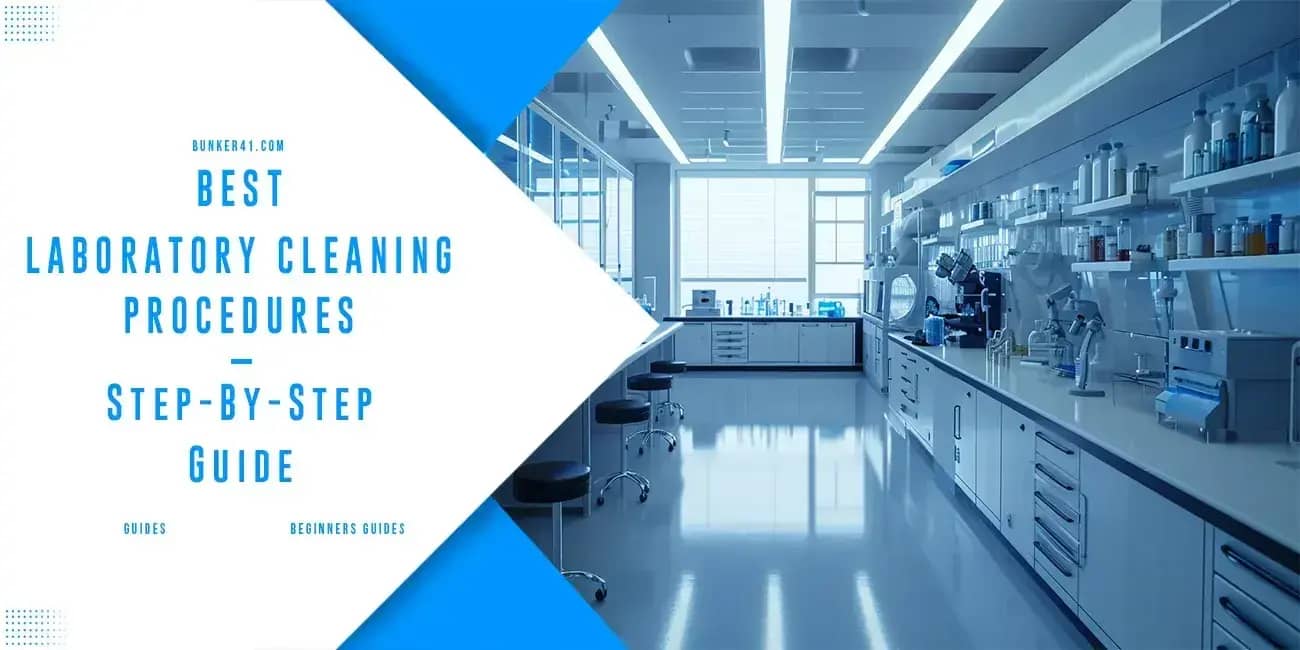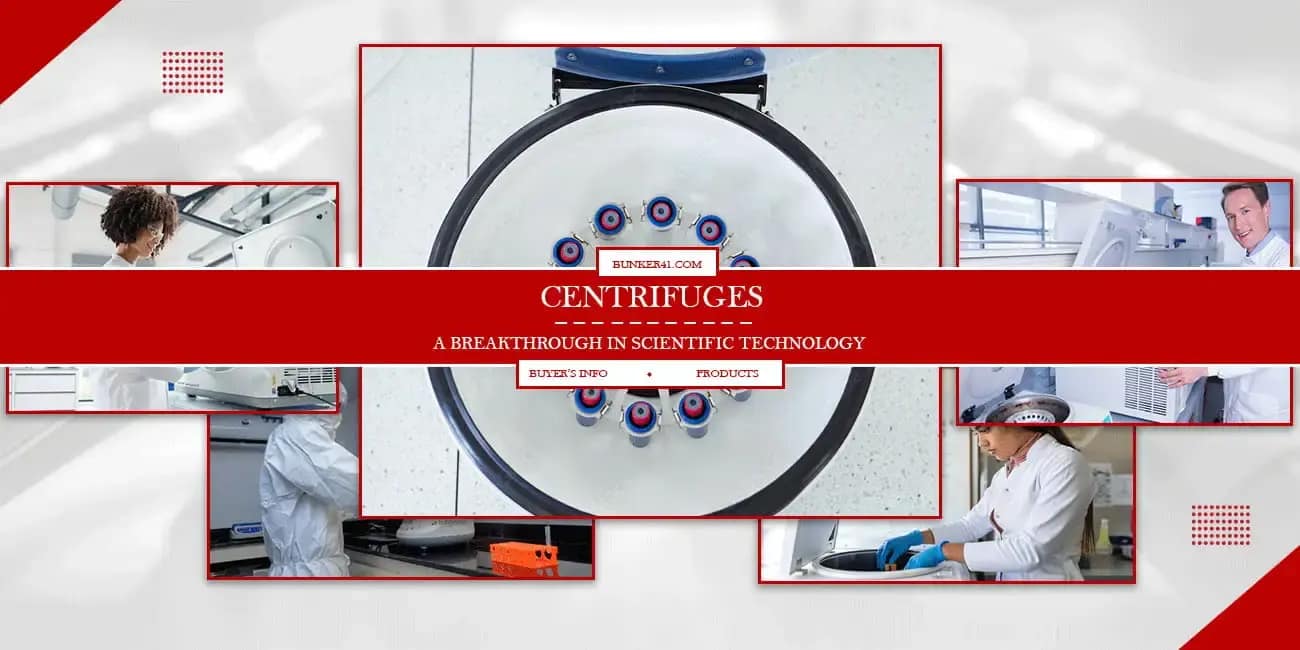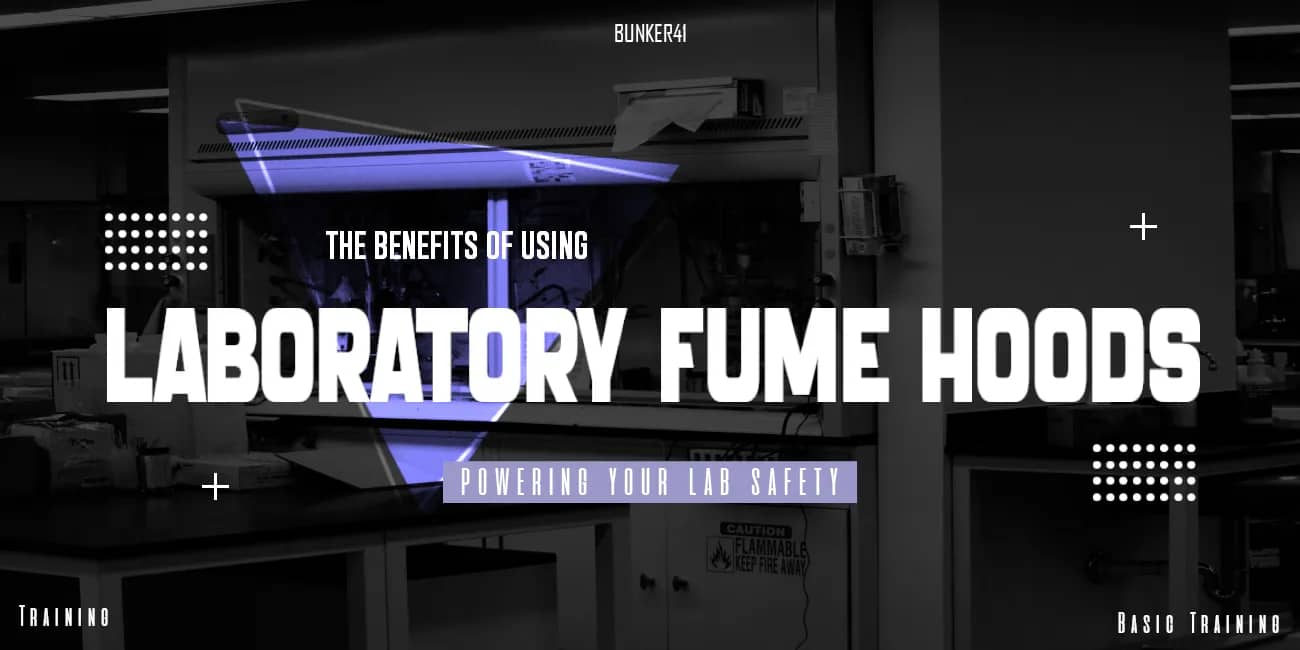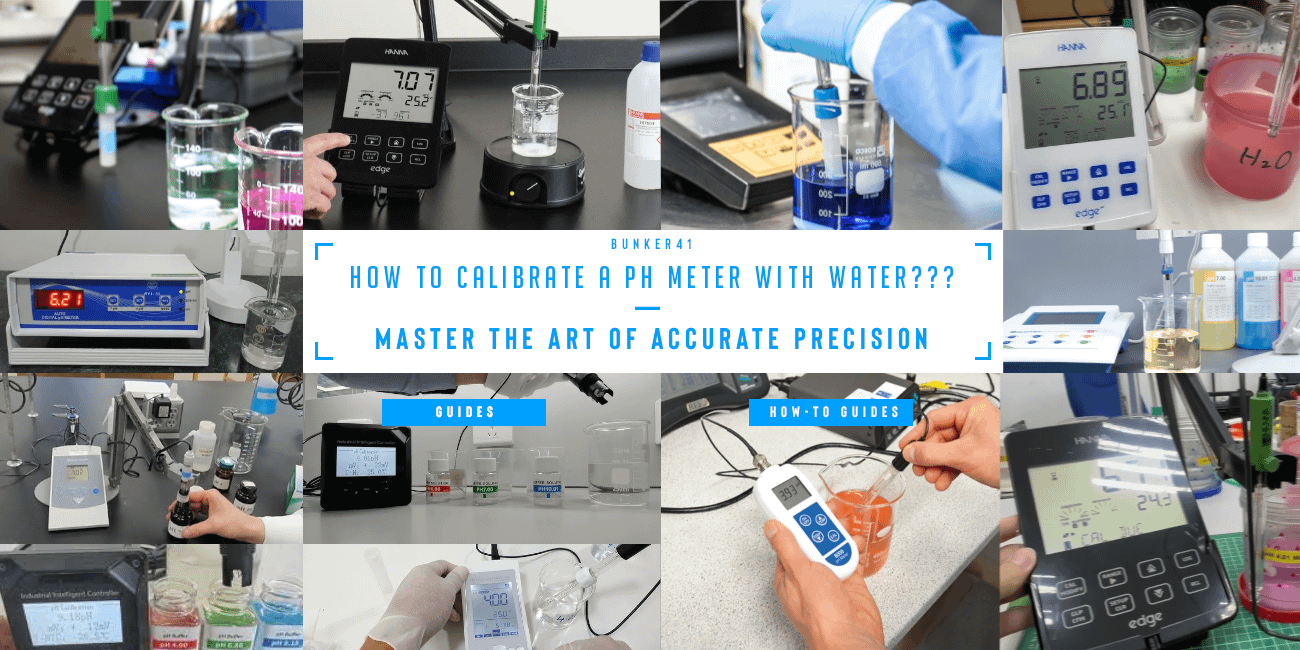Your cart is currently empty!
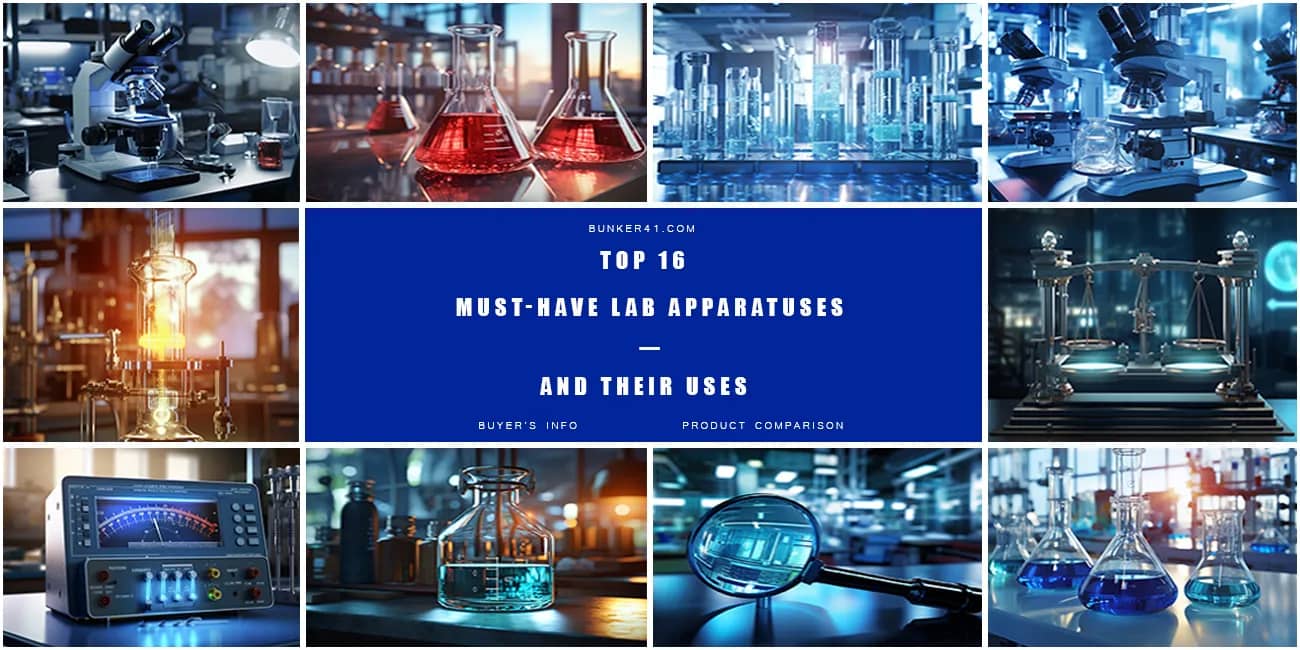
Top 16 Must-Have Lab Apparatuses And Their Uses In 2025
Introduction
Innovation in laboratory technology is not just about having advanced tools, but about expanding the horizons of human knowledge.”

The modern laboratory is a bustling hub of scientific inquiry, where precision, safety, and innovation converge to drive research forward. In this dynamic environment, having the right lab apparatuses is crucial for ensuring accurate results and efficient workflows. From molecular biology to chemistry, each discipline relies on a specific set of tools designed to meet unique experimental needs. Our exploration of the top 16 must-have lab apparatuses delves into the essential equipment that every lab should be
equipped with, highlighting their uses and the benefits they bring to scientific research. A comprehensive lab equipment list typically includes a variety of instruments and glassware, such as beakers, test tubes, and reagent bottles, all vital for measuring volumes, preparing samples, and avoiding cross-contamination. Safety equipment, including lab coats and rubber stoppers, is paramount to protect researchers from harmful chemicals and ensure a sterile environment. The versatility of lab
glassware, ranging from flat-bottomed flasks to easy-pouring beakers, supports a wide range of experiments and solutions, making them indispensable in laboratories. Key tools like the Bunsen burner, ring stand, and microscopes areessential for heating, supporting apparatuses, and magnifying small samples, respectively. In molecular biology and cell culture labs, precision instruments are necessary for handling delicate samples and conducting high-precision experiments. Laboratory equipment such as pipettes, centrifuges, and spectrophotometers enhances the accuracy and reliability of research,
facilitating the transfer and analysis of substances with utmost precision. The integration of these apparatuses ensures that labs can operate efficiently, safely, and effectively, equipping scientists and students with the tools they need to advance knowledge and innovation. Whether it’s for a bustling research facility or an educational setting, having the right laboratory equipment is fundamental to the success of scientific endeavors. This guide provides a detailed look at the essential lab apparatuses that are commonly used, their specific applications, and their importance in fostering a robust and productive laboratory environment.
Key Takeaways
Importance of Lab Apparatus in Scientific Research

“Innovation is not just about technology, but about enabling scientific potential.”

In the realm of scientific research, the importance of lab apparatus cannot be overstated. These tools are the backbone of experimentation, allowing researchers to conduct precise and controlled studies that drive innovation and discovery. From test tubes to microscopes, each piece of lab equipment plays a critical role in ensuring accuracy and reliability in experimental results. The meticulous selection and use of must-have lab apparatuses, such as lab glassware, reagent bottles, and Bunsen burners, enable scientists to
measure volumes accurately, prepare samples effectively, and avoid cross-contamination, which is paramount in molecular biology and cell culture studies. Safety equipment, including lab coats and rubber stoppers, is essential for protecting researchers from hazardous chemicals and ensuring a secure working environment. The comprehensive lab equipment list also includes sophisticated instruments like centrifuges and spectrophotometers, which enhance the precision of analytical procedures. Tools such as the ring stand provide stability for various experimental setups, while easy-pouring beakers and flat-bottom flasks
facilitate the handling and mixing of liquids, contributing to the efficiency of laboratory processes. In addition to facilitating everyday lab activities, these apparatuses are crucial in enabling high-precision experiments and achieving consistent results. Whether it’s measuring small amounts of substances, heating solutions with a Bunsen burner, or observing microscopic details, the right laboratory equipment empowers scientists to conduct thorough research and draw meaningful conclusions. The careful maintenance and use of these tools are vital for the longevity of the equipment and the accuracy of the data collected, making them indispensable in both educational settings
and advanced research laboratories. Moreover, the versatility of lab glassware and other equipment ensures that laboratories can accommodate a wide range of experiments, from chemistry to biology, thereby fostering a rich environment for scientific exploration. By equipping laboratories with the essential apparatuses, researchers can push the boundaries of knowledge, develop innovative solutions, and contribute significantly to scientific progress. Thus, the importance of lab apparatus in scientific research is not just in their utility but in their capacity to transform hypotheses into tangible results, advancing our understanding of the natural world.
Ensuring Safety And Accuracy In Laboratories

“Safety is not an option in scientific research—it’s a fundamental requirement.”

Ensuring safety and accuracy in laboratories is paramount to the success and integrity of scientific research. Laboratories, whether in educational institutions or advanced research facilities, rely on a precise and comprehensive lab equipment list to maintain these standards. Essential tools such as test tubes, beakers, and reagent bottles, crafted from high-quality lab glassware, are indispensable for measuring volumes and preparing samples with high precision. Safety equipment, including lab coats and rubber stoppers, is
crucial for protecting researchers from hazardous chemicals and avoiding cross-contamination during experiments. In molecular biology and cell culture labs, where delicate and sensitive samples are handled, maintaining a contamination-free environment is vital. Instruments like microscopes and ring stands facilitate accurate observations and stable experimental setups. The use of Bunsen burners for heating solutions and flat-bottomed flasks for easy pouring further enhances the efficiency and safety of laboratory procedures. These must-have lab apparatuses not only ensure accurate results but also protect
scientists from potential hazards, fostering a safe research environment. Laboratory equipment such as spectrophotometers and centrifuges, designed for high-precision measurements, enable researchers to conduct thorough analyses and achieve reliable results. This precision is critical in experiments involving small amounts of substances, where even the slightest error can lead to significant discrepancies. By equipping laboratories with the right tools, researchers can perform their tasks with confidence, knowing that their equipment supports the highest standards of accuracy and safety. Furthermore, the role of lab glassware extends beyond mere
functionality; it encompasses the ability to handle a wide range of chemicals and solutions, making it essential for various types of research. From heating liquids to transferring substances, the versatility of laboratory equipment ensures that labs can cater to diverse experimental needs. By prioritizing safety and precision, laboratories create an environment where scientists can focus on innovation and discovery, driving advancements in fields such as chemistry, biology, and beyond. Ultimately, the meticulous selection and use of laboratory apparatuses reflect a commitment to excellence in scientific research. Ensuring safety and accuracy in laboratories not only
safeguards the well-being of researchers but also upholds the integrity of their work, enabling them to contribute valuable knowledge to the scientific community.
Top 16 Must-Have Lab Apparatuses

“The right tools make all the difference in scientific discovery.”
In the ever-evolving landscape of scientific research, having the right tools at your disposal is paramount. Laboratory apparatuses are the backbone of any lab, ensuring precise and reliable results in experiments, research, and diagnostics. The top 16 must-have lab apparatuses range from fundamental tools like test tubes and beakers to sophisticated instruments such as microscopes and centrifuges. Each piece of equipment, whether it’s for measuring volumes with high precision or avoiding cross-contamination during sample preparation, plays a crucial role in maintaining the integrity and safety of the lab environment. For instance, safety equipment
such as lab coats and safety goggles are essential to protect researchers from hazardous chemicals, while molecular biology tools like cell culture flasks and reagent bottles are indispensable for preparing and storing biological samples. Instruments like Bunsen burners and ring stands facilitate various chemical reactions and heating processes, ensuring experiments are conducted efficiently and safely. Lab glassware, including beakers and measuring cylinders, is vital for the accurate handling and measurement of liquids, ensuring easy pouring and reducing the risk of spillage. Additionally, modern labs rely heavily on high-precision equipment such as analytical balances
and pipettes to ensure the accuracy and reliability of experimental results. These tools help in the meticulous preparation of samples and solutions, which is fundamental in experiments ranging from simple school projects to advanced scientific research. The integration of these apparatuses in laboratories underscores the importance of having a well-equipped lab to support a wide range of scientific endeavors. Overall, the diverse range of laboratory equipment not only enhances the capabilities of researchers but also ensures that experiments are conducted with the highest standards of safety and accuracy. By equipping laboratories with these essential tools,
scientists and students alike can explore the fascinating world of science with confidence and precision.
The Core Must-Have Lab Apparatuses
In the intricate world of scientific research and experimentation, the cornerstone of any laboratory’s success lies in its equipment. The core must-have lab apparatuses are indispensable tools that not only facilitate a wide range of experiments but also ensure accuracy, safety, and efficiency. From the fundamental test tubes and beakers that handle and measure liquids to sophisticated instruments like microscopes and centrifuges that delve into molecular biology and cell culture, each piece of lab equipment plays a crucial role in advancing scientific knowledge. Safety equipment such as lab coats and safety goggles are essential for protecting researchers from
hazardous chemicals and potential contamination. Precision tools like analytical balances and pipettes are vital for measuring volumes with high accuracy, while reagent bottles and rubber stoppers ensure safe storage and handling of chemicals. The use of Bunsen burners and ring stands is crucial for heating and conducting various chemical reactions, making them staples in any chemistry lab. Glassware, including beakers and measuring cylinders, is indispensable for mixing, preparing samples, and ensuring easy pouring of solutions. These apparatuses, combined with the use of flat-bottom flasks and crucibles, support a wide array of laboratory tasks from simple
student experiments to advanced research projects. The meticulous design and functionality of these tools, from the molecular biology applications to the essential safety protocols, underline their importance in fostering a productive and safe laboratory environment. By equipping laboratories with these essential apparatuses, scientists and students are empowered to conduct their research with the highest standards of precision and safety, ultimately driving forward the boundaries of scientific discovery.
1. Test Tubes: The Workhorses of the Lab
In the diverse ecosystem of laboratory equipment, test tubes stand out as the quintessential workhorses, indispensable to virtually every scientific inquiry. These cylindrical pieces of lab glassware are essential for preparing samples, mixing chemicals, and conducting small-scale reactions. Their versatility makes them a staple in the lab equipment list for disciplines ranging from molecular biology and cell culture to chemistry and physics. Test tubes, often paired with rubber stoppers, are crucial for safely containing reactions and avoiding contamination, a critical aspect in both educational settings and advanced research laboratories. Typically made from
borosilicate glass to withstand thermal stress, test tubes are used in conjunction with various other laboratory apparatuses such as ring stands for heating with a Bunsen burner and microscopes for detailed analysis. Their design facilitates easy pouring and accurate measurement of liquids, supporting high precision in experiments. Whether used by students for simple experiments or researchers handling complex solutions, test tubes are the embodiment of practicality and efficiency in the lab. This essential piece of lab equipment not only enables a wide range of scientific procedures but also ensures the accuracy and reliability of experimental results, making them
truly the workhorses of any laboratory setting.
2. Beakers: Versatile Tools for Mixing and Measuring
In the realm of essential lab apparatuses, beakers stand out as versatile tools that are fundamental for mixing and measuring liquids in laboratories. These cylindrical containers, typically made of borosilicate glass, are designed to withstand thermal and chemical stress, making them indispensable in various scientific disciplines including chemistry, molecular biology, and cell culture. Beakers come in a range of sizes, and their wide mouths and spouts facilitate easy pouring and precise measurement of solutions, which is crucial for experiments requiring high precision. Whether used for mixing reagents, heating chemicals on a Bunsen burner, or preparing samples for
further analysis, beakers are a staple in any well-equipped lab. They are often paired with other laboratory equipment such as ring stands and rubber stoppers to prevent contamination and ensure safety during experiments. Their flat bottoms and graduated markings allow for accurate measuring volumes of liquids, which is essential for both educational purposes and advanced research. Beakers’ versatility extends to their role in avoiding cross-contamination and ensuring the accuracy of scientific experiments. Scientists and students alike rely on these indispensable tools for their reliability and practicality in handling small amounts of liquids, conducting various laboratory
procedures, and contributing to significant research advancements. Thus, beakers are not just common laboratory apparatuses; they are vital instruments that enhance the capabilities and precision of any laboratory environment.
3. Bunsen Burners: Precision Heating for Crucial Experiments
Among the core must-have lab apparatuses, the Bunsen burner stands as an iconic symbol of scientific inquiry, providing precision heating essential for crucial experiments. This versatile piece of lab equipment, a staple in chemistry labs, is used to heat substances, sterilize equipment, and facilitate chemical reactions that require a controlled flame. Bunsen burners are designed to produce a hot, consistent flame by mixing gas with air in a controlled manner, ensuring high precision and safety during experiments. Utilized in conjunction with other laboratory equipment such as ring stands and lab glassware, Bunsen burners are indispensable for experiments
that involve heating chemicals to specific temperatures. Their ability to adjust flame intensity makes them ideal for a range of laboratory tasks, from simple student demonstrations to complex research procedures. In molecular biology and cell culture labs, they are used for tasks like flame sterilization to avoid cross-contamination. Safety is paramount when using Bunsen burners, necessitating the use of lab coats, safety goggles, and proper ventilation to prevent accidents. The controlled environment they provide is crucial for experiments that demand high precision and reliability, ensuring that researchers can conduct their work with accuracy and confidence. Bunsen burners’
role in heating, coupled with their simplicity and effectiveness, cements their place as a fundamental tool in the arsenal of laboratory instruments.
4. Microscopes: Unveiling The Invisible
In the pantheon of must-have lab apparatuses, microscopes stand as the gatekeepers to the invisible world, unlocking realms of discovery that are otherwise beyond human perception. Essential in fields ranging from molecular biology to materials science, microscopes allow scientists to examine cell cultures, microorganisms, and intricate chemical structures with astonishing clarity and precision. These instruments come in various types, such as compound microscopes for high magnification of small specimens and stereo microscopes for three-dimensional viewing of larger samples. A microscope’s ability to reveal the minute details of a sample is
crucial for tasks like preparing samples and conducting high-precision research. In cell culture studies, for instance, microscopes enable researchers to monitor cellular growth, morphology, and behavior, which are fundamental for understanding biological processes and developing medical treatments. Furthermore, in chemistry labs, microscopes are indispensable for analyzing the microstructure of materials and assessing the quality and purity of chemical substances. The meticulous design of microscopes, featuring components such
as objective lenses and fine focus knobs, ensures that researchers can achieve the accuracy required for detailed scientific analysis. The integration of advanced imaging techniques, including fluorescence and electron microscopy, further extends their capabilities, allowing scientists to visualize structures at the molecular and atomic levels. This profound ability to unveil the invisible makes microscopes not just essential lab equipment but also powerful tools that drive innovation and expand our understanding of the natural world.
5. Lab Coats and Safety Equipment: Protecting Scientists
In the meticulous and often hazardous environment of laboratories, lab coats and safety equipment are indispensable for protecting scientists and ensuring safe research practices. Lab coats, typically made from flame-resistant and chemical-resistant materials, form the first line of defense against spills, splashes, and contamination. They not only protect the skin and clothing of researchers but also help prevent cross-contamination between samples, a crucial aspect in fields like molecular biology and cell culture. Safety equipment extends beyond lab coats to include essential items such as safety goggles, gloves, and face shields, which protect against chemical
splashes, airborne particles, and other hazards. The proper use of these tools is vital when handling dangerous chemicals, operating Bunsen burners, or working with high-precision instruments. For instance, safety goggles are crucial when preparing samples or measuring volumes of potentially hazardous liquids to avoid eye injuries. In addition to personal protective equipment, laboratories are equipped with emergency safety equipment like eyewash stations, safety showers, and fire extinguishers. These are critical in mitigating the effects of accidental exposure to harmful substances or fires, ensuring a safe environment for both researchers and students.
The comprehensive lab equipment list must include these safety tools to comply with stringent safety regulations and promote a culture of safety within the lab environment. Overall, lab coats and safety equipment are not just accessories but essential apparatuses that protect the lives of scientists, enabling them to conduct their experiments and research with confidence and precision. By equipping laboratories with these protective tools, we ensure that scientific inquiry progresses without compromising the safety and well-being of those at the forefront of discovery.
6. Graduated Cylinders: Measuring Volumes with Accuracy
In the realm of laboratory precision, graduated cylinders are indispensable tools for measuring volumes with accuracy. These tall, narrow cylinders are meticulously calibrated with measurement markings that allow scientists to accurately measure liquids, making them essential in any lab equipment list. Unlike beakers, which are more suited for mixing and rough measurements, graduated cylinders are designed to provide precise volume readings, which is crucial for experiments that require exact quantities of reagents. Graduated cylinders are commonly used in various scientific disciplines, including chemistry, molecular biology, and environmental
science, to prepare samples and solutions with high precision. They come in various sizes, typically ranging from 10 mL to 2 liters, and are made from durable materials like borosilicate glass or plastic to withstand chemicals and repeated use. The design of graduated cylinders often includes a pouring spout and a stable base to facilitate easy pouring and prevent spills, thus ensuring both safety and accuracy in the lab. Their role in avoiding cross-contamination and ensuring the accurate transfer of liquids is vital for maintaining the integrity of scientific experiments. Graduated cylinders are used alongside other laboratory equipment, such as pipettes for transferring small
amounts of liquids and beakers for initial mixing. The precision offered by graduated cylinders supports rigorous scientific research and educational experiments, enabling students and researchers to conduct their work with confidence and accuracy. By equipping laboratories with graduated cylinders, we ensure that the measurement of liquid volumes is conducted with the highest level of precision, which is foundational to the success and reliability of scientific research and experimentation.
7. Reagent Bottles: Storing and Handling Chemicals
Reagent bottles are pivotal in the world of laboratory equipment, serving as the primary containers for storing and handling various chemicals. These bottles, typically made from glass or durable plastic, are designed to maintain the integrity and purity of chemical substances, which is crucial for ensuring accurate and uncontaminated experimental results. The use of reagent bottles helps in avoiding cross contamination and protecting against the hazards of chemical spills and exposure, which underscores their role in laboratory safety protocols. In laboratories, reagent bottles are commonly used to store acids, bases, and other reactive solutions, making them a
fundamental part of any lab equipment list. Their design often includes tight-sealing caps or rubber stoppers, which prevent the evaporation of volatile substances and protect against contamination. This is particularly important in fields like molecular biology and chemistry, where the precision of chemical handling can significantly impact the outcomes of experiments and research. Reagent bottles come in various sizes and materials to suit different types of chemicals and laboratory needs. Glass bottles are preferred for storing reactive chemicals and solutions that might react with plastic, while plastic bottles are used for less reactive substances.
The transparency of these bottles also allows for easy monitoring of the contents, ensuring that scientists can quickly identify the chemicals they need without risking contamination. By equipping laboratories with high-quality reagent bottles, scientists can ensure the safe storage and handling of chemicals, which is crucial for maintaining the accuracy and reliability of their research. These bottles not only protect the chemical substances but also safeguard the scientists who handle them, making them an indispensable component of laboratory equipment.
8. Ring Stands and Clamps: Supporting Lab Equipment
In the intricate setup of a laboratory, ring stands and clamps are indispensable tools that provide crucial support for various experiments and procedures. These apparatuses are essential for holding and securing lab equipment such as test tubes, beakers, and flasks, allowing scientists to conduct experiments with precision and safety. Ring stands typically consist of a sturdy metal base and an upright rod, to which various clamps and rings can be attached to hold glassware and other equipment at the desired height and position. The versatility of ring stands and clamps makes them invaluable in laboratories across disciplines, from chemistry to molecular biology. They
facilitate the heating of substances over a Bunsen burner, the filtration of solutions, and the titration of liquids, among other tasks. The ability to adjust the height and angle of the clamps ensures that scientists can position their equipment precisely, which is crucial for achieving accurate and reproducible results. Furthermore, the use of these supports helps in avoiding cross-contamination and ensures that the setup remains stable during experiments. This is particularly important when dealing with volatile chemicals or delicate samples, where stability and precision are paramount. Ring stands and clamps are must-have lab apparatuses that enhance the functionality
and safety of laboratory setups, making them essential tools for both students and seasoned researchers alike. In summary, ring stands and clamps are more than just simple pieces of lab equipment; they are fundamental components that support a wide range of scientific endeavors. Their ability to hold and stabilize various laboratory apparatuses makes them an integral part of the lab equipment list, ensuring that experiments are conducted with the highest standards of accuracy and safety.
Advanced Laboratory Tools for Specialized Research
In the ever-evolving field of scientific research, advanced laboratory tools are pivotal for conducting specialized and precise experiments. These tools go beyond the basics, incorporating sophisticated technology to meet the rigorous demands of modern laboratories. From intricate molecular biology studies to complex chemical analyses, these advanced apparatuses are designed to provide high precision and reliability, ensuring that researchers can achieve accurate and reproducible results. Key instruments such as advanced microscopes, which enable detailed observation of cellular and molecular structures, and high-precision analytical balances,
which are essential for measuring small amounts of substances with utmost accuracy, are indispensable in cutting-edge research. Additionally, tools like automated pipettes and specialized cell culture equipment facilitate the preparation and handling of samples, significantly enhancing the efficiency and safety of laboratory procedures. The inclusion of sophisticated safety equipment and lab coats is also crucial, as they protect scientists from potential hazards associated with handling chemicals and biological specimens. Reagent bottles and rubber stoppers ensure safe storage and handling of volatile substances, while tools like ring stands and clamps provide the
necessary support for conducting intricate experiments. These advanced laboratory tools are not just equipment but are foundational elements that equip researchers with the capabilities to push the boundaries of scientific knowledge. In summary, the integration of advanced laboratory tools in research environments is essential for fostering innovation and achieving breakthroughs in various scientific fields. These must-have lab apparatuses provide the precision, safety, and efficiency required for conducting specialized research, making them indispensable components of any modern laboratory.
9. Spectrophotometers: Measuring Light Absorption
Spectrophotometers are indispensable tools in modern laboratories, essential for measuring the absorption of light by various substances. These high-precision instruments operate by passing a beam of light through a sample and measuring the intensity of light before and after it passes through the sample. This process helps determine the concentration of solutes in the solution, making spectrophotometers vital for both qualitative and quantitative analysis in fields like molecular biology, chemistry, and environmental science. In molecular biology, spectrophotometers are used to measure the concentration and purity of DNA, RNA, and proteins, which is
crucial for preparing samples for experiments such as PCR and sequencing. In chemistry labs, they are used to analyze the reaction kinetics and the concentration of reaction products, providing accurate data that supports high-precision research and experiments. The ability to measure light absorption across different wavelengths allows researchers to identify and quantify a wide range of substances, enhancing the capabilities of laboratory investigations. Safety is a key consideration when using spectrophotometers, as with all lab equipment. Proper lab coats, safety equipment, and handling protocols are necessary to avoid contamination and ensure the
accuracy of measurements. Additionally, the use of high-quality lab glassware, like cuvettes, ensures that light transmission is optimal and results are reliable. By integrating spectrophotometers into their suite of laboratory tools, scientists can conduct experiments with greater precision and reliability, driving forward research across various scientific disciplines. These instruments are not just another piece of equipment; they are essential tools that provide the data needed to advance our understanding of complex biological and chemical processes.
10. Centrifuges: Separating Samples with Precision
Centrifuges are indispensable instruments in any well-equipped laboratory, enabling the precise separation of samples based on their densities. By applying centrifugal force, these devices efficiently separate substances such as blood components, cell cultures, and chemical solutions, making them essential for research and clinical applications. Their utility spans across various scientific disciplines, including molecular biology, biochemistry, and medical diagnostics. The core functionality of a centrifuge lies in its ability to rotate samples at high speeds, creating a powerful force that drives heavier particles to the bottom of the tube while lighter particles remain at
the top. This process, known as centrifugation, is crucial for tasks such as purifying cellular organelles, isolating nucleic acids, and preparing samples for further analysis. The precision and reliability of centrifuges make them must-have lab apparatuses for any detailed laboratory equipment list. Safety is paramount when operating centrifuges, necessitating the use of lab coats, safety goggles, and gloves to protect against potential spills and contamination. Additionally, the use of appropriate lab glassware, such as flat-bottom tubes and rubber stoppers, ensures the integrity of the samples and the equipment. Proper calibration and maintenance
of centrifuges are also vital to avoid cross-contamination and achieve high precision in results. In summary, centrifuges are essential tools that enhance the capabilities of laboratories by providing accurate and efficient sample separation. Their role in avoiding contamination, ensuring safety, and supporting high-precision experiments underscores their importance in scientific research and clinical diagnostics.
11. Pipettes: Transferring Small Amounts with Accuracy
Pipettes are fundamental tools in any laboratory, revered for their precision in transferring small volumes of liquids with remarkable accuracy. These essential instruments come in various types, including single-channel, multi-channel, and electronic pipettes, each designed to meet specific needs in disciplines like molecular biology, chemistry, and medical diagnostics. Whether preparing samples for cell culture, measuring volumes of reagents, or conducting meticulous experiments, pipettes are must-have lab apparatuses that ensure reliability and consistency in scientific research. The design of pipettes allows scientists to draw and dispense liquids with precision,
minimizing the risk of contamination and ensuring the integrity of the samples. This high precision is crucial in experiments where even slight variations in liquid volumes can significantly impact the results. For instance, in molecular biology, accurate pipetting is essential for tasks such as PCR amplification and sequencing, where the exact concentration of reagents determines the success of the experiment. Using pipettes in conjunction with other laboratory equipment, such as reagent bottles and test tubes, enhances the efficiency of sample preparation and handling. Safety equipment like lab coats and gloves further ensures that researchers can operate pipettes
safely, avoiding direct contact with potentially hazardous chemicals. The meticulous care and calibration of pipettes also play a vital role in maintaining their accuracy and longevity, making them indispensable tools in any lab’s arsenal. In summary, pipettes are essential instruments in laboratories, enabling the precise transfer of small liquid volumes and supporting a wide range of scientific investigations. Their accuracy, reliability, and versatility make them indispensable in achieving high standards of experimental rigor and reproducibility in modern research.
12. Analytical Balances: Weighing Substances Precisely
Analytical balances are among the most crucial pieces of lab equipment, providing unparalleled precision in weighing small amounts of substances. These highly sensitive instruments are capable of measuring masses to the nearest 0.0001 grams, making them essential for tasks requiring extreme accuracy. Whether in chemistry, molecular biology, or pharmaceuticals, the ability to measure precise quantities of reagents and samples is fundamental to ensuring the validity and reproducibility of experimental results. The design of analytical balances incorporates advanced technology to minimize the impact of environmental factors like air currents and vibrations. This is
achieved through features such as draft shields and vibration-dampening mechanisms, which ensure stability and accuracy during measurements. Scientists rely on these balances for preparing samples, formulating solutions, and conducting quantitative analyses, where even the slightest deviation in mass can lead to significant errors in outcomes. Using analytical balances in a laboratory setting also involves strict adherence to safety and handling protocols to avoid cross-contamination and ensure the integrity of the measurements. Lab coats, safety goggles, and gloves are standard safety equipment used in conjunction with these balances to protect both the user
and the samples. Additionally, the balances are often used alongside other essential lab apparatuses such as beakers, test tubes, and reagent bottles to facilitate the preparation and transfer of substances. In conclusion, analytical balances are indispensable for achieving high precision in laboratory measurements, supporting the meticulous nature of scientific research and experimentation. Their role in providing accurate mass measurements ensures that scientists can conduct their work with confidence and achieve reliable, reproducible results.
13. pH Meters: Measuring Acidity and Alkalinity
pH meters are indispensable instruments in laboratories for measuring the acidity or alkalinity of solutions with high precision. These devices provide a digital readout of the pH level, which is crucial for experiments and processes in chemistry, molecular biology, and environmental science. Understanding the pH of a solution is essential for tasks such as cell culture, where the pH needs to be carefully controlled to maintain optimal growth conditions, or in chemistry, where the pH can influence reaction rates and outcomes. The functionality of pH meters relies on a sensitive electrode that detects the hydrogen ion activity in a solution, converting this activity into a
measurable voltage. This voltage is then translated into a pH value, typically ranging from 0 (highly acidic) to 14 (highly alkaline), with 7 being neutral. Using a pH meter ensures that measurements are more accurate and reliable compared to traditional methods like litmus paper, which is less precise. In the laboratory, pH meters are often used alongside other essential equipment such as beakers, reagent bottles, and test tubes to prepare and measure samples accurately. The precision of pH meters helps in avoiding cross-contamination and maintaining the integrity of experiments. Additionally, safety equipment like lab coats and gloves are vital when handling chemicals
to prevent harm and ensure accurate readings. Proper calibration and maintenance of pH meters are critical to ensure their longevity and accuracy, making them a must-have on any lab equipment list. Overall, pH meters are vital tools that enhance the capabilities of laboratories by providing accurate and reliable pH measurements, essential for a wide range of scientific applications. Their role in maintaining precise conditions in experiments underscores their importance in both educational and research settings.
14. Autoclaves: Sterilizing Lab Equipment
Autoclaves are indispensable in laboratories for their unparalleled efficiency in sterilizing equipment, ensuring a contamination-free environment critical for accurate and reliable scientific research. Utilizing high-pressure saturated steam autoclaves effectively eliminate all forms of microbial life, including bacteria, viruses, fungi, and spores, making them essential for maintaining the sterility of lab glassware, test tubes, reagent bottles, and other tools. The process of autoclaving is fundamental in fields like molecular biology and cell culture, where even minute levels of contamination can skew results or ruin entire experiments. By subjecting lab equipment to
temperatures of 121°C or higher, autoclaves ensure that all microbial contaminants are eradicated, thus preventing cross-contamination and preserving the integrity of experimental samples. Autoclaves are versatile and can sterilize a wide range of materials, including liquids, solids, and glassware, making them a must-have on any lab equipment list. Their ability to handle large volumes of equipment simultaneously enhances laboratory efficiency and safety. In addition to sterilizing tools, autoclaves are also used to decontaminate biological waste, ensuring that hazardous materials are safely neutralized before disposal. To maximize the effectiveness of autoclaves,
laboratory personnel must follow strict protocols, including proper loading techniques and regular maintenance, to ensure the equipment functions optimally. Safety equipment, such as lab coats and gloves, is also crucial when handling autoclaved items to prevent burns and other injuries. The precise control and reliability of autoclaves underscore their importance in maintaining a sterile laboratory environment, making them essential tools for researchers and students alike. In summary, autoclaves are critical for sterilizing laboratory equipment, protecting researchers from contamination, and ensuring the accuracy and safety of scientific experiments. Their role in
maintaining sterile conditions is fundamental to the success and integrity of laboratory research.
15. Crucibles: Heating Substances to High Temperatures
Crucibles are indispensable in laboratories for heating substances to very high temperatures, playing a critical role in various chemical analyses and material testing. These small, heat-resistant containers are typically made from ceramics or metals, allowing them to withstand extreme temperatures without breaking down or reacting with the substances inside. Crucibles are essential for processes such as ashing, calcination, and melting of metals, where precise and high-temperature conditions are required. In a laboratory setting, crucibles are often used in conjunction with a Bunsen burner or a furnace, allowing scientists to heat samples safely and efficiently. They
are designed to facilitate even heating and easy pouring of molten substances, which is crucial for maintaining accuracy in experiments. For instance, in chemistry labs, crucibles are used to determine the composition of a sample by burning off volatile substances and measuring the residue left behind. Safety is a paramount concern when working with crucibles, as the high temperatures involved pose significant risks. Proper safety equipment, including lab coats, gloves, and safety goggles, is essential to protect researchers from burns and exposure to harmful fumes. Additionally, using appropriate tools like crucible tongs ensures safe handling of these hot containers.
The use of crucibles extends to various scientific disciplines, including materials science, where they are used to synthesize and test new materials. Their ability to withstand high temperatures and corrosive environments makes them a must-have in any lab equipment list, providing scientists with the capabilities to perform high-precision experiments and achieve accurate results. In conclusion, crucibles are fundamental tools in the lab for heating substances to high temperatures, supporting a wide range of scientific research and experimentation. Their durability, versatility, and safety features make them indispensable in achieving precise and reliable results in
various laboratory applications.
16. Fume Hoods: Ensuring Safety While Working with Chemicals
Fume hoods are essential safety apparatuses in laboratories, designed to protect scientists and researchers from hazardous fumes and volatile chemicals. These enclosed workspaces are equipped with powerful ventilation systems that draw in air from the lab and expel it outside, effectively containing and removing harmful vapors and airborne particles. This process not only ensures the safety of the lab personnel by preventing inhalation of toxic substances but also maintains a clean and contaminant-free laboratory environment. Fume hoods are crucial when working with volatile solvents, acids, or any chemicals that can produce
dangerous fumes. They are a staple in laboratories where handling hazardous substances is routine, such as in molecular biology, chemistry, and pharmaceutical research. By using a fume hood, researchers can safely conduct experiments that involve heating chemicals, mixing reagents, or preparing samples without the risk of exposure to toxic gases or explosive reactions. The design of fume hoods typically includes a sash that can be adjusted to control the airflow and a work surface that is resistant to chemicals and easy to clean. Proper use of fume hoods, combined with other safety equipment like lab coats, safety goggles, and gloves,
significantly reduces the risk of chemical exposure and accidents in the lab. Regular maintenance and monitoring are essential to ensure the fume hoods function effectively and provide the necessary protection. In summary, fume hoods are indispensable for ensuring safety while working with chemicals in laboratories. Their role in preventing contamination and protecting researchers from hazardous fumes makes them a must-have on any lab equipment list, contributing to the overall safety and efficiency of scientific research and experiments.
Enhancing Laboratory Efficiency and Research Capabilities


In the dynamic world of scientific research, enhancing laboratory efficiency and research capabilities hinges on the utilization of essential lab apparatuses that streamline processes and ensure accuracy. The integration of advanced lab equipment, such as spectrophotometers for measuring light absorption and centrifuges for precise sample separation, allows scientists to conduct complex experiments with high precision and reliability. Must-have lab apparatuses like pH meters and analytical balances are crucial for measuring the acidity and mass of substances with exactitude,
supporting rigorous experimental protocols and ensuring reproducibility of results. Safety equipment, including lab coats and fume hoods, protects researchers from hazardous chemicals and ensures a safe working environment, preventing contamination and accidents. Furthermore, the proper use of lab glassware, such as beakers and reagent bottles, facilitates the accurate preparation and transfer of solutions, while ring stands and clamps provide the necessary support for various experimental setups. The efficiency of these tools is amplified by their ability to integrate seamlessly with each
other, creating a cohesive workflow that enhances both the speed and accuracy of scientific research. Advanced molecular biology techniques and cell culture studies also benefit from specialized equipment, which allows for precise control and monitoring of experimental conditions. This capability is crucial for producing reliable data and driving forward innovative research in fields ranging from biochemistry to environmental science. By equipping laboratories with these essential tools, researchers can maximize their productivity and achieve groundbreaking discoveries. The synergy between these apparatuses not only supports
detailed and accurate research but also fosters a safer, more efficient laboratory environment, ultimately advancing scientific knowledge and innovation.
Conclusion: The Crucial Role of Lab Apparatuses

“The right tools are not just instruments, but gateways to scientific discovery.”

In conclusion, the role of lab apparatuses in scientific research and experimentation cannot be overstated. These essential tools, from test tubes and beakers to advanced spectrophotometers and centrifuges, form the backbone of any laboratory, facilitating precise measurements, safe handling of chemicals, and accurate experimental outcomes. Each piece of lab equipment, whether it’s for heating with a Bunsen burner or measuring volumes with high precision, plays a critical role in maintaining the
integrity and reliability of scientific work. Safety equipment like lab coats, fume hoods, and safety goggles ensure that researchers are protected from hazardous chemicals and potential contamination, while instruments like pH meters and analytical balances provide the accuracy needed for detailed chemical analysis and molecular biology studies. The proper use of lab glassware, reagent bottles, and rubber stoppers helps in preparing samples and avoiding cross contamination, further supporting the high standards required in scientific research. In
laboratories, the synergy between these apparatuses enhances the efficiency and capabilities of researchers, enabling them to conduct complex experiments and achieve groundbreaking discoveries. The comprehensive lab equipment list, which includes tools for every step of the research process, ensures that scientists can perform their work with the utmost precision and safety, ultimately advancing our understanding of the natural world and contributing to innovations across various scientific disciplines. By investing in high-quality lab apparatuses and maintaining a well-equipped laboratory environment, institutions can support the
endeavors of scientists and students alike, fostering a culture of excellence and precision in research. These tools are not just conveniences but essential components that drive scientific progress and innovation.
Summary
The blog “Top 16 Must-Have Lab Apparatuses And Their Uses” provides an in-depth look at essential laboratory equipment, highlighting their critical roles in scientific research and ensuring both safety and accuracy in lab settings. Starting with an introduction that underscores the importance of lab apparatus, the blog delves into the core tools that every laboratory should have. Test tubes are recognized as indispensable for various experiments, particularly in molecular biology and cell culture, where preventing contamination is paramount. Beakers are celebrated for their versatility in mixing and measuring liquids, with a focus on
safe handling techniques. Bunsen burners are essential for precision heating, crucial for many experiments, with guidelines on controlling flame intensity and safety protocols. Microscopes are emphasized for their role in observing minute details in molecular biology and cell research, ensuring high precision in analysis. Lab coats and safety equipment are deemed essential for protecting scientists and preventing contamination. Graduated cylinders and reagent bottles are highlighted for their roles in accurately measuring and handling liquids, respectively. The blog also explores advanced tools like spectrophotometers for measuring light
absorption, centrifuges for sample separation, pipettes for precise liquid transfer, and analytical balances for accurate substance measurement. pH meters, autoclaves, crucibles, and fume hoods are discussed for their specific applications in maintaining lab safety and operational efficiency. Supporting lab glassware and tools, such as rubber stoppers and ring stands, are also covered, emphasizing their importance in experimental setups. Techniques for preparing samples and solutions to avoid contamination and ensure accuracy are provided, alongside a comprehensive list of essential lab equipment tailored to meet diverse research needs.
In conclusion, the blog reinforces the vital role of each apparatus in fostering a safe, accurate, and efficient laboratory environment, underscoring their indispensability for researchers and scientists.




